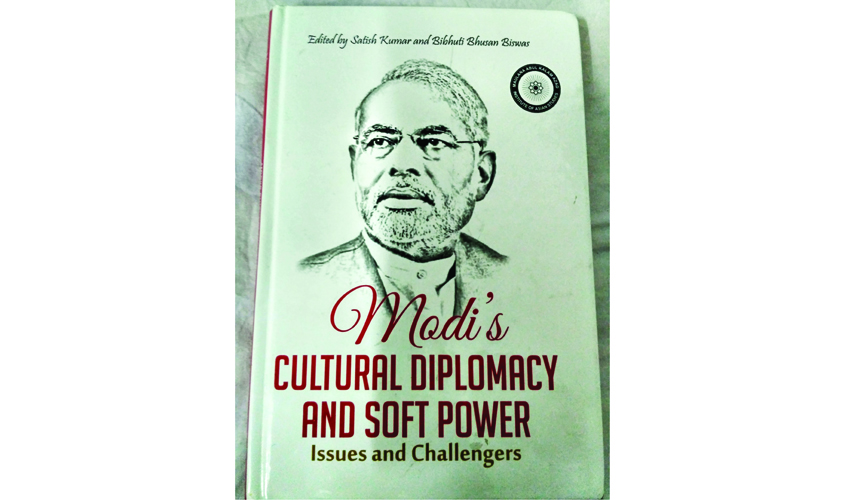Modi’s Cultural Diplomacy and Soft Power: Issues and Challenges
Edited By Satish Kumar and Bibhuti Bhusan Biswas
Publisher: Ansh Book International
Pages: 200
Price: Rs 1495
Cultural diplomacy has been an important dimension of a country’s soft power, which comes along with hard power. When a country becomes hard power, its soft power gets entertained. The international impact of India’s soft power was felt long time back. Indian arts, culture and spirituality have attracted people from all over the world. But its soft power remained dormant. However, Prime Minister Narendra Modi has given a new dimension to India’s soft power.
The book, edited by Dr Satish Kumar and Dr Bibhuti Bhushan Biswas, underlines how Modi has enlarged India’s soft power canvas in the last about two years. He has effectively combined new elements of soft power — Samman (dignity), Samvaad (dialouge), Samriddhi (shared prosperity), Suruksha (regional and global security), and Sanskriti evam Sabhayata (Cultural and civilizational links) — into the foreign policy. Modi has tried to embed India’s political values in its larger geopolitical calculus and has put special emphasis on the idea that India can be the “Vishwa Guru” or w orld teacher. In August 2014, when he visited Kathmandu, he spoke about “Buddha” and “Yuddha”, which captured the essence of the contemporary political dynamics in Nepal, where the Maoists returned to the mainstream after a violent civil war. Soon after, in Tokyo, he nicely articulated his concept of “vistaarvad aur vikasvaad”. Modi often invokes the centuries old Indian idea of “vasudhaiva kutumbkam”, which means the entire world is a family, to underline India’s enduring commitment to universalism.
The Modi government’s foreign policy clearly aims at, among many other things, building an Asian Century on the basis of “vikasvaad” which would bring peace and stability to the continent, which has not only been experiencing unprecedented economic growth and innovation but is also vulnerable to the occurrence of major conflicts. Cultural bonding can be one of the ways to prevent conflict and promote peace. Indian cultural diplomacy seeks to spread the message of peace, brotherhood, coexistence and prosperity.
The image of India as also of Prime Minister has already pushed India to the centre stage of international affairs. To give one example, Yoga Day being accepted and endorsed by the UN as a global event is a reflection of new India where assertive posturing by the PM has created wave in favour of reaping the age old storage India culture that spans across several centuries of the world.
The book presents 24 well-researched research articles written by experts from 12 different universities and colleges. It covers a wide range of themes from Hindi movies to Indiology tracing it to great ancient epics of Mahabharata and Ramayana. It also presents various other elements of India’s soft power and cultural diplomacy practices. Readers will find the book not only information but also thought provoking.

